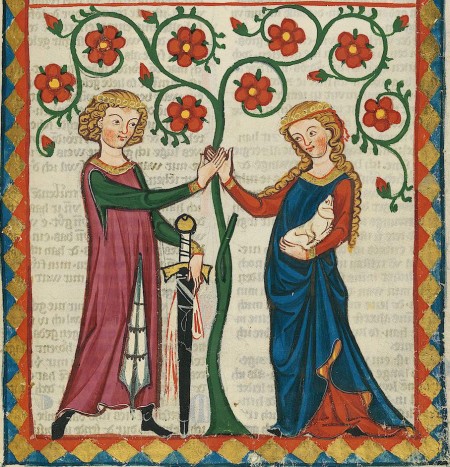It looks like you're using an Ad Blocker.
Please white-list or disable AboveTopSecret.com in your ad-blocking tool.
Thank you.
Some features of ATS will be disabled while you continue to use an ad-blocker.
share:
a reply to: primalfractal
The myth may indicate the translation of the tree cult from Kish which fell into sharp decline post-Akkadian period to Uruk, but i think it would horrify the Kisites that Inaana transformed the tree of herbal knowledge into a bed rather than learning to make cakes or practise medicine, but there was some association and a connection to the cult of the tavern, but as you source there was connection between fertility and the plants related to such
There was a linguistic connection between the Eagle and the Cedar in terms of Erin, likely from meaning high. erin.sup.musen, there's a paper looks at this and also what might be involved in transgressing the limits of Shamash or being caught in his entanglements, were the Eagle is grounded, and can perhaps no longer exit the Solar system.
Etana in Eden
The myth may indicate the translation of the tree cult from Kish which fell into sharp decline post-Akkadian period to Uruk, but i think it would horrify the Kisites that Inaana transformed the tree of herbal knowledge into a bed rather than learning to make cakes or practise medicine, but there was some association and a connection to the cult of the tavern, but as you source there was connection between fertility and the plants related to such
O heroic Utu who produces malt and beer for the alehouse
O my brother, you the lord of the fearsome glory,
Let me climb up with you to the highlands
the thing of the women, the male member, I do not know
the thing of the women, having sex with men, I do not know
the thing of the women, kissing, I do not know
On the mountain, let us feed on anything, really anything.
after we have eaten the herbs, after we have eaten the cedar
There was a linguistic connection between the Eagle and the Cedar in terms of Erin, likely from meaning high. erin.sup.musen, there's a paper looks at this and also what might be involved in transgressing the limits of Shamash or being caught in his entanglements, were the Eagle is grounded, and can perhaps no longer exit the Solar system.
Etana in Eden
edit on 11-5-2021 by Madrusa because: (no reason given)
a reply to: Madrusa
Yes it's yet another case of a myth being rewritten to take away power from the Goddess. Read a decent article about it last night.
www.academia.edu...
Much better when the tree thrives, Inanna heals and makes cakes, her beer is sweet
etcsl.orinst.ox.ac.uk...#
The Etna in Eden paper is really good, the biblical comparison with the Garden and original sin clear. Another example of an echo of Etna is The Dream of King Neberchanezzer, whoever wrote that one was insightful I think.
www.thefreelibrary.com...
Curses for breaking solemn oaths are understandable, but the charging roving weapon sounds ominous.
Maybe a magic curse breaking remedy is needed? I guess atonement and purification are the main thing.
Rebirth, and the rise of the Pheonix!
Pretty sure they were drunk when they wrote this...
but i think it would horrify the Kisites that Inaana transformed the tree of herbal knowledge into a bed rather than learning to make cakes or practise medicine
Yes it's yet another case of a myth being rewritten to take away power from the Goddess. Read a decent article about it last night.
"Inanna and the Huluppu Tree":
One Way of Demoting a Great Goddess
The seemingly innocent poem "Inanna and the Huluppu Tree," then, constitutes an
androcentric account of the reasons for
Inanna's involvement in the "Sacred Marriage," both as herself and as furniture. It shows well how myth can be remade to
serve ideology! A powerful goddess subject, the sacred World Tree,
had, over the centuries, been reshaped into limited goddess objects, a
bed and a throne, while the goddess herself was
co-opted into seeing this limited role as
powerful. Independent Inanna had become feminine, a woman reliant on males to get her out of trouble. The extant poem probably echoes an earlier story, one in which Inanna and the World
Tree had very different roles.
www.academia.edu...
Much better when the tree thrives, Inanna heals and makes cakes, her beer is sweet
etcsl.orinst.ox.ac.uk...#
The Etna in Eden paper is really good, the biblical comparison with the Garden and original sin clear. Another example of an echo of Etna is The Dream of King Neberchanezzer, whoever wrote that one was insightful I think.
The covenant's transgressor, the parties agree, will suffer consequences: reprisal from Samas, along with the denial of entrance to bountiful mountains nearby. Two instruments will ensure this: a "roving weapon" (kakku murtappidu) will charge, while "traps" (gisparru) associated with "Samas's curse-oath" (mamit Samas) will clamp down and catch the guilty party.
www.thefreelibrary.com...
Curses for breaking solemn oaths are understandable, but the charging roving weapon sounds ominous.
For this one must first atone for committed sins, which otherwise are an abomination to the sun god. If your angry heart is not cut off, if the destructive curse is not undone. It is an abomination to Utu (nig-gig utu-ke). After he has crossed over the limit(s) (zag bal) of the gods ...
Maybe a magic curse breaking remedy is needed? I guess atonement and purification are the main thing.
The charge leveled against the eagle mentions taboo violation, literally its "eating" (anzillalasakka akalu), which here reverberates with the offense itself. The sun god also declares that he will not approach the bird. The understanding of what precedes, presumably the motivation behind this last declaration, is uncertain: the writing (ta-ma-ta-a-ma; extant fully only in ms [B.sub.3] [SB]) permits derivatives of both tamu (< "to swear an oath") and matu ("to die"); both, in fact, have been proposed
In Etana this involves the very word for "eagle" eru, with the bird's systematic denuding by the snake and its eventual instrumentality in the desired conception of Etana's wife. The Akkadian for "nude/naked" and "to conceive/become pregnant" is a homonym of two independent words enu
Rebirth, and the rise of the Pheonix!
Pretty sure they were drunk when they wrote this...
edit on 12-5-2021 by primalfractal because: (no reason given)
a reply to: St Udio
With all the soft disclosure going on I think it's a good time to re-examine old myths of ascents to heaven in a new light. Surely the most likely candidates for the craft, seen and recorded for millennia, but recently receiving mainstream acceptance, are the group of beings historically connected to the phenomenon.
youtu.be...
There is definitely someone operating highly advanced craft out there, and admittedly not our governments, a good thing really because they are clearly not to be trusted.
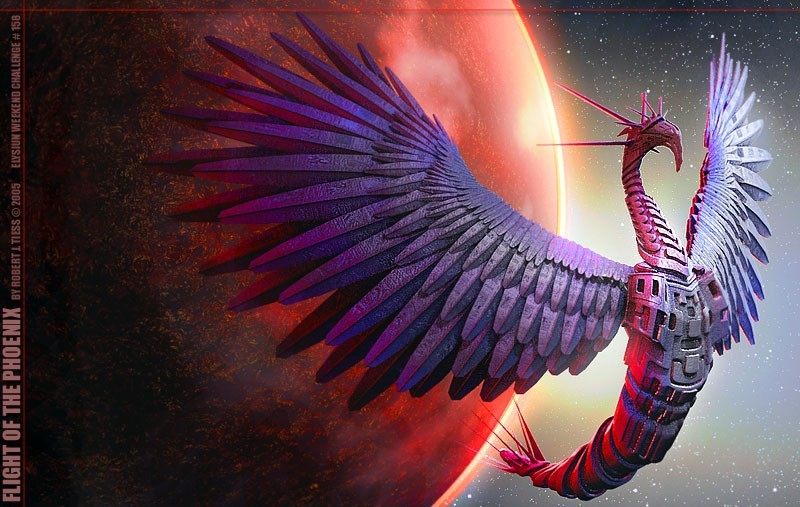
i think the 7 gateways to 'heaven' are of pagan/mystical creation
both the pagan mystics and the bible zealots might just be concocting mumbo-jumbo which entertains Ones' intellect and stimulates Ones' Spirit
With all the soft disclosure going on I think it's a good time to re-examine old myths of ascents to heaven in a new light. Surely the most likely candidates for the craft, seen and recorded for millennia, but recently receiving mainstream acceptance, are the group of beings historically connected to the phenomenon.
youtu.be...
There is definitely someone operating highly advanced craft out there, and admittedly not our governments, a good thing really because they are clearly not to be trusted.

edit on 12-5-2021 by primalfractal because: (no reason given)
a reply to: primalfractal
The herbal tree of the tavern barmaid becomes the tree of the tavern harlot after it washes down the river through space and time, a negative aspect of Ishtar, were the bed is her liminal space and cultic item, but the cult of Bau remained very strong in Anatolia as Hebat and Kybele of the Greek mysteries.

Sex Magic and the Liminal Body.
The connection made between the Eagle and Cedar in the Etana in Eden paper is interesting because as i said Eren is the same basis as Ar-yan or Hurr-ian, it's basic meaning is high, the Eagle then as the totemic symbol of the Aryan or the Hawk, in terms of Hurrians/Horites.
But anyway the problem with the decline in religious specialization and the curse of syncretism is that Inanna is not only expected to breed cows and milk them whilst looking good, her original Cow-girl role, but also to use the butter to make the cakes and the farmers grain to make the beer, take a part time job as a barmaid, become an all wise herbalist and accomplished physician, achieve academic excellence towards becoming a scribal Goddess, record everyones deeds and judge them accordingly and if any spare time remains become King of the World whilst avoiding the vice squad.
a reply to: primalfractal
I'm sure there's nothing to worry about...
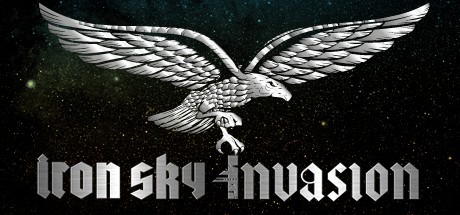
The herbal tree of the tavern barmaid becomes the tree of the tavern harlot after it washes down the river through space and time, a negative aspect of Ishtar, were the bed is her liminal space and cultic item, but the cult of Bau remained very strong in Anatolia as Hebat and Kybele of the Greek mysteries.

Sex Magic and the Liminal Body.
The connection made between the Eagle and Cedar in the Etana in Eden paper is interesting because as i said Eren is the same basis as Ar-yan or Hurr-ian, it's basic meaning is high, the Eagle then as the totemic symbol of the Aryan or the Hawk, in terms of Hurrians/Horites.
But anyway the problem with the decline in religious specialization and the curse of syncretism is that Inanna is not only expected to breed cows and milk them whilst looking good, her original Cow-girl role, but also to use the butter to make the cakes and the farmers grain to make the beer, take a part time job as a barmaid, become an all wise herbalist and accomplished physician, achieve academic excellence towards becoming a scribal Goddess, record everyones deeds and judge them accordingly and if any spare time remains become King of the World whilst avoiding the vice squad.
a reply to: primalfractal
I'm sure there's nothing to worry about...

edit on 12-5-2021 by Madrusa because: (no reason given)
a reply to: Madrusa
Does sound like a very hectic schedule, cow-girl would be easier, bet she was a cow whisperer...
youtu.be...
Eren, Aryan and high remind me of Éire and Erin (Irish for ireland) and of course Eyrie, At-al-land/Atlantis and the sunken Doggerland.
Also Thule via the cedar, as the Northern Aryan homeland.
en.wikipedia.org...
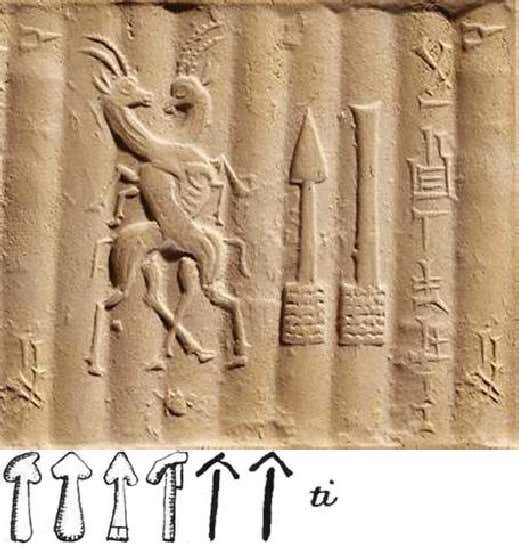
Then there is the Nordic god/spear rune Tyr/Tiwaz. The old sky God and associated with the pole star.
en.m.wikipedia.org...(rune)
ag-history.blogspot.com...
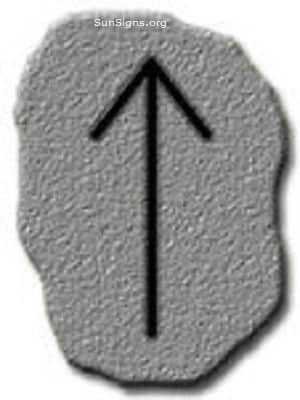
Haha
Does sound like a very hectic schedule, cow-girl would be easier, bet she was a cow whisperer...
youtu.be...
Eren, Aryan and high remind me of Éire and Erin (Irish for ireland) and of course Eyrie, At-al-land/Atlantis and the sunken Doggerland.
Also Thule via the cedar, as the Northern Aryan homeland.
Thule (/ˈθuːliː/[1] Greek: Θούλη Thoúlē, Latin: Thūlē) is the farthest north location mentioned in ancient Greek and Roman literature and cartography
en.wikipedia.org...
Thule-
From the Middle English Tīle, Tȳle, from the Old English Tȳle, Thīla, Tīle (variants of Þȳle) and the Medieval Latin Tīle, from the Classical Latin Thūlē, Thȳlē, from the Ancient Greek Θούλη (Thoúlē), Θῡ́λη (Thū́lē), of unknown origin.[1]

On this imprint a cedar is transformed into an arrow. In Sumer an arrow is
called: “Ti”, which also means: "timber," “rib” and “life”.
Altaic Hieroglyphs and Hittite Inscriptions BY C. R. CONDER, Capt. R.E.
In Sumer
the word "Ti" means “arrow”, "timber
",
“rib”
, and it also means
“life”
.
“Nin
-
ti is the Sumerian “she who
makes life
Then there is the Nordic god/spear rune Tyr/Tiwaz. The old sky God and associated with the pole star.
en.m.wikipedia.org...(rune)
ag-history.blogspot.com...

I'm sure there's nothing to worry about...
Haha
edit on 13-5-2021 by primalfractal because: (no reason given)
a reply to: primalfractal
So you could extrapolate the rib association from the tree of knowledge, there's always some weird and convoluted reasoning, the sign for root is Arina which closely relates to that for snake which is Mus were Arina/Erina suggest a Feminine diminutive
Nin-ti as the rib was one of eight Deities extrapolated from En-ki by Ninhursag related to forbidden plants he had ate, this plant lore would have been an aspect of the mystery cults relating to Bau, but the connection to the arrow is interesting in terms of archer Gods.
There was also the Goddess Azimua of the branch born from Enki's arm.
Ningishzida is generally related to snakes and roots thus an underworld and afterlife God, important in Royal funerary rites, there may be connection with Nin-azimua and the origin of the Goddess Isis, in terms of Osiris as a Deity embedded in a tamarisk tree trunk which was holding up the roof of a palace in Byblos
In general sage and scribal tradition is capable of conceptualizing pretty much everything in terms of trees and that included the connection of Earth to the Heavens in terms of a tree such as the Cedar, when such a tree falls the connection is understood as lost but you can always grow another which was the significance of the pine-cone.
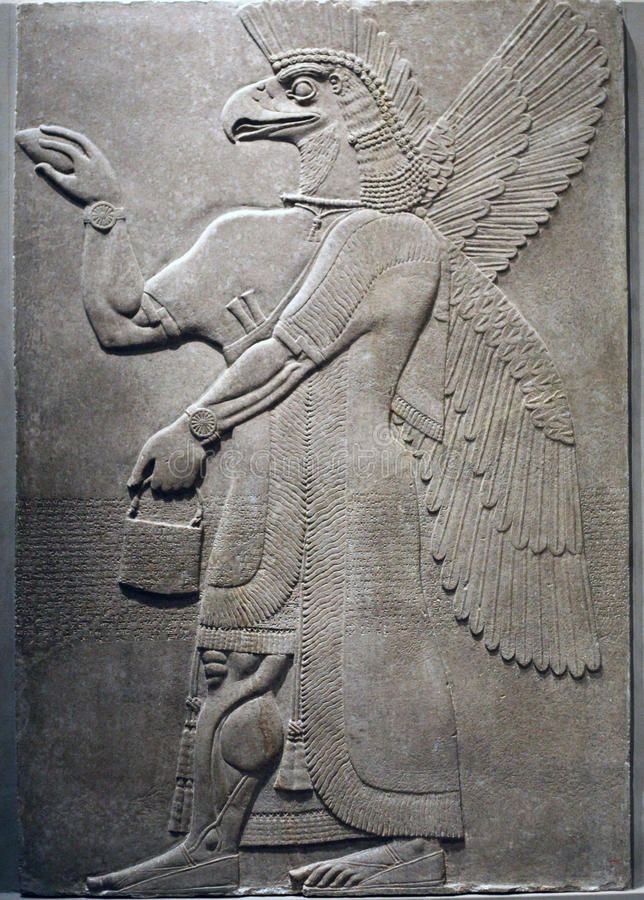
So you could extrapolate the rib association from the tree of knowledge, there's always some weird and convoluted reasoning, the sign for root is Arina which closely relates to that for snake which is Mus were Arina/Erina suggest a Feminine diminutive
Nin-ti as the rib was one of eight Deities extrapolated from En-ki by Ninhursag related to forbidden plants he had ate, this plant lore would have been an aspect of the mystery cults relating to Bau, but the connection to the arrow is interesting in terms of archer Gods.
There was also the Goddess Azimua of the branch born from Enki's arm.
My brother (Enki), what part of you hurts you?’ ‘My arm hurts me.’ She (Ninhursag) gave birth to Azimua out of it…
Ninazimua was a little known Sumerian goddess from the Arali Desert. Her name means 'Lady who makes the tree branches grow straight.' She was noted for her scribal skills. She became the wife of Ningishzida... Ninazimua (Lady Flawlessly Grown Branch).
Ningishzida is generally related to snakes and roots thus an underworld and afterlife God, important in Royal funerary rites, there may be connection with Nin-azimua and the origin of the Goddess Isis, in terms of Osiris as a Deity embedded in a tamarisk tree trunk which was holding up the roof of a palace in Byblos
To the valiant warrior Ninjiczida, in his palace, the shepherd Ur-Namma offered a chariot with ...... wheels sparkling with gold, ...... donkeys, thoroughbreds, ...... donkeys with dappled thighs, ......, followed ...... by a shepherd and a herdsman.
To his spouse, Ninazimua, the august scribe, denizen of Arali, in her palace, the shepherd Ur-Namma offered a headdress with the august ear-pieces (?) of a sage, made of alabaster, a ...... stylus, the hallmark of the scribe, a surveyor's gleaming line, and the measuring rod .
In general sage and scribal tradition is capable of conceptualizing pretty much everything in terms of trees and that included the connection of Earth to the Heavens in terms of a tree such as the Cedar, when such a tree falls the connection is understood as lost but you can always grow another which was the significance of the pine-cone.

a reply to: Madrusa
A logical denotation, although somewhat confusing due to similarity.
Bau is a very memorable goddess, both in attributes and name 😊
Guess she may have been the last avatar Goddess queen to rule the earth in her rightful place ie. officially, most recently in Kish around 2450 B.C.E, but going right back to the engineering of the human race.
A good thing, especially in this day and age.
Speaking of archer gods...
The Sumerian word NIN (from the Akkadian pronunciation of the sign EREŠ)(𒎏) was used to denote a queen or a priestess, and is often translated as "lady". Other translations include "queen", "mistress", "proprietress", and "lord".[1]
Cuneiform NIN ("lady") sign, a ligature of MUNUS (𒊩) and TÚG (𒌆)
Many goddesses are called NIN, such as DNIN.GAL ("great lady"), DÉ.NIN.GAL ("lady of the great temple"), DEREŠ.KI.GAL, and DNIN.TI.
A logical denotation, although somewhat confusing due to similarity.
Bau is a very memorable goddess, both in attributes and name 😊
Guess she may have been the last avatar Goddess queen to rule the earth in her rightful place ie. officially, most recently in Kish around 2450 B.C.E, but going right back to the engineering of the human race.
He bestowed on you the E-ninnu, the holy city, the shrine which brought forth the seeds of mankind
that included the connection of Earth to the Heavens in terms of a tree such as the Cedar, when such a tree falls the connection is understood as lost but you can always grow another which was the significance of the pine-cone
A good thing, especially in this day and age.
Speaking of archer gods...
edit on 14-5-2021 by primalfractal because: (no reason given)
a reply to: primalfractal
Bau isn't easy to understand, but her sister was Nisaba and they can be understood as Vega in Lyra and Virgo, 13,000 years ago when Virgo rose at the Spring Equinox Vega was the Northern Pole star, so they relate to what emerged at that time and subsequent developments, this is Bau as the Mother of all mysteries and the emergence of the Neolithic period, including the knowledge and usage of plants and grains.
Vega then related to the Eagle has landed and the life of Heaven at that point in time, before Draco became the Pole star and then Polaris.
Oriental tales of Vega are along the lines of a Heavenly Princess descending to some Cow-poke on Earth represented by Altair, relating to the Summer triangle, these are obviously true.
A Galaxy apart
Bau isn't easy to understand, but her sister was Nisaba and they can be understood as Vega in Lyra and Virgo, 13,000 years ago when Virgo rose at the Spring Equinox Vega was the Northern Pole star, so they relate to what emerged at that time and subsequent developments, this is Bau as the Mother of all mysteries and the emergence of the Neolithic period, including the knowledge and usage of plants and grains.
MUL.APIN called this star-pattern Urku, the Dog. and her sacred animal was the dog. Vega, far and away the brightest star in this part of the sky, was Bau's star.
The traditional name Vega comes from a loose transliteration of the Arabic word wāqi‘ meaning "falling" or "landing", via the phrase an-nasr al-wāqi‘, "the falling eagle"
in Akkadian it was Tir-anna, "Life of Heaven". In Babylonian astronomy, Vega may have been one of the stars named Dilgan, "the Messenger of Light"
Vega then related to the Eagle has landed and the life of Heaven at that point in time, before Draco became the Pole star and then Polaris.
Oriental tales of Vega are along the lines of a Heavenly Princess descending to some Cow-poke on Earth represented by Altair, relating to the Summer triangle, these are obviously true.
A Galaxy apart
Vega was celestial princess, a goddess of the sky. Immortal she may have been, yet she was weary as it seemed she would live in eternity alone.
One day Altair, a mortal, caught the eye of Vega. She descended from the heavens to greet him, and as they got to know each other she fell deeply in love. Vega promises Altair that no matter what they will be together in the heavens.
But when Vega’s father finds out, he is enraged that his daughter would fall in love with a mere mortal. His fury only grows when he discovers that Vega promised to bring Altair up to the heavens with her.
In the most cruel of fashions, Vega’s father grants the promise that she made. The two lovers were placed in the sky as stars. Yet while they were both in the heavens, they were not together. The great Celestial River, (known to us as Milky Way) separated them.
Yet each year, on the 7th night of the 7th moon, a bridge of magpies forms across the Celestial River. Though it would be for one night a year the two lovers are reunited as Altair dares to travel to his beloved.
a reply to: Madrusa
So the waiting game, 13000 years...
And that was maybe the second landing, the restoration after the flood, wonder when the first one was.
The names for Vega are interesting, amazing how much time myths can preserve stories over.
Supposed to be like Chinese valentine's day.
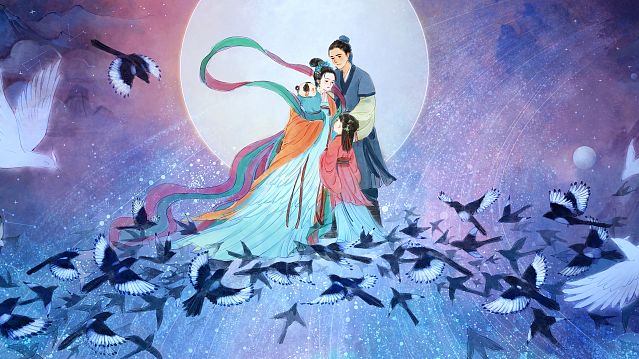
That sure is a lot of magpies...
So the waiting game, 13000 years...
And that was maybe the second landing, the restoration after the flood, wonder when the first one was.
The names for Vega are interesting, amazing how much time myths can preserve stories over.
The Qixi Festival, also known as the Qiqiao Festival, is a Chinese festival celebrating the annual meeting of the cowherd and weaver girl in mythology. The festival is celebrated on the 7th day of the 7th lunisolar month on the Chinese calendar
Supposed to be like Chinese valentine's day.

The distance between Altair and Vega is about 16 light years away, and magpies' average body length is 45 centimeters. So if lined up, roughly a total of 34,000 trillion magpies would be needed.
That sure is a lot of magpies...
a reply to: primalfractal
Akkadian Tir-anna, "Life of Heaven" similar to Tír na nÓg, Vega as Pole star followed on from a star of Cygnus so the Princess may be seen to arrive upon a Swan, as was the case with the Nanse daughter of En-ki, the only way to travel really.
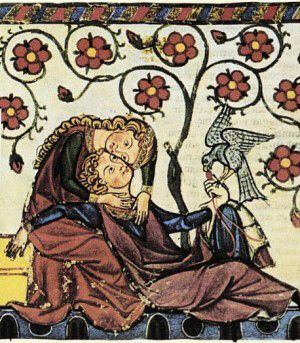

13,000 years ago should probably be considered Post-Flood or little ice age, what happened before who knows, but the more interesting subsequent developments are taking place in the Elam/Persian gulf region around 6,500 years ago, Draco became the Pole star and it was all about snakes, the Ubaid period.
The Codex Manesse seems to best cover the romance of woman with Dog and the Falconer.

Akkadian Tir-anna, "Life of Heaven" similar to Tír na nÓg, Vega as Pole star followed on from a star of Cygnus so the Princess may be seen to arrive upon a Swan, as was the case with the Nanse daughter of En-ki, the only way to travel really.

Tír na nÓg is described as a beautiful place (a forested wilderness or flowery meadow), but it is usually dangerous or hostile to human visitors (such as Ossian, Diarmuid, the Fianna, the King of Greece), who remain on the island for a period of time that is typically a multiple of three (three days or years). The women of Tír na nÓg are very beautiful - and maybe the only residents - and sometimes leave to visit mortal men or otherwise establish a presence.
In the story of Golden-headed Niamh or Golden-haired Niamh (Irish: Niaṁ Cinn-Óir, Niamh Cinn-Óir), an otherworldly woman who carried away Oisín to live with her in her domain of Tír na nÓg, the Land of Youth

13,000 years ago should probably be considered Post-Flood or little ice age, what happened before who knows, but the more interesting subsequent developments are taking place in the Elam/Persian gulf region around 6,500 years ago, Draco became the Pole star and it was all about snakes, the Ubaid period.
The Codex Manesse seems to best cover the romance of woman with Dog and the Falconer.

edit on 15-5-2021 by Madrusa because: (no reason given)
a reply to: Madrusa
Beautiful illustrations.
Hard to find English translations of the Manesse Codex, this being likely somewhat inaccurate, but it still seems to capture the heart of it I think, the love shared between the falconer and the heavenly woman with the dog.
www.replicaprints.com...
Tír na nÓg is certainly a heaven or otherworld in the stories, one of its several names also incorporates more recent earthly history I think.
Quite popular as a modern fantasy fiction topic as well, although they tend to make a jumble of the myths, maybe moreso than folks in the past, as I think they may have generally had more respect for them then.
Really the most likely place for the location of Atlantis.

smithsonianmag.com
q-mag.org...
Chronologically occurring after the sinking of Doggerland, likely a migration of the Aryan people, the megalith builders. Explains where the building technology came from.
Are you talking dragons 😊🐉
Beautiful illustrations.
Hard to find English translations of the Manesse Codex, this being likely somewhat inaccurate, but it still seems to capture the heart of it I think, the love shared between the falconer and the heavenly woman with the dog.
“Praise of Loved Ones”
“I have sent my heart to my beloved; Because longing pain Never sees it stolen Unless grace gives me the one. I am alone from that which Conquers me.
Go, Empress, To my grace That your love Relieves me of my complaints; Let me rejoice in your love and goodness. That, in my mind, disappears the pain.
Who, then, shall turn to me? The sadness in my mind, Do you not want it to end? With feminine kindness, You, who I remember in the evening, and in the morning I live in grief, I complain like always.
Should I not look at her? It increases my suffering; I do not like to gaze on other women. No other face has ever shone so wonderfully; No stars flicker, Or shine purer in the lake
I never saw a flower in the thaw more beautiful Than her, my wife. I sing glory to her! And I sing how beautiful she is in body and soul, Nothing I miss then, I stand in joy!”
www.replicaprints.com...
Tír na nÓg is certainly a heaven or otherworld in the stories, one of its several names also incorporates more recent earthly history I think.
Quite popular as a modern fantasy fiction topic as well, although they tend to make a jumble of the myths, maybe moreso than folks in the past, as I think they may have generally had more respect for them then.
Tír fo Thuinn
[Ir. tonn, wave, i.e. Land under Wave].
Imagined realm under the seas, one of the many places where the Tuatha Dé Danann would have fled after their defeat by the Milesians. The ‘Hard Gilly’ leads the Fianna here in Tóraigheacht an Ghiolla Dheacair [The Pursuit of the Hard Gilly/ Difficult Servant]. In parts of Gaelic Scotland such as the isle of Tiree, Tír fo Thuinn might also be known as An tEilean Uaine [the Green Island].
Doggerland (also called Dogger Littoral[1]) was an area of land, now submerged beneath the southern North Sea, that connected Great Britain to continental Europe. It was flooded by rising sea levels around 6500–6200 BCE. Geological surveys have suggested that it stretched from what is now the east coast of Great Britain to what are now the Netherlands, the western coast of Germany and the peninsula of Jutland
Really the most likely place for the location of Atlantis.

smithsonianmag.com
considered as one more possible location for Plato's Atlantis. Doggerland stretched all the way from the east coast of England and Scotland to Denmark and supported a thriving mesolithic population. "It was the true heart of Europe," says Richard Bates, geochemist at St Andrews University in Scotland
q-mag.org...
the more interesting subsequent developments are taking place in the Elam/Persian gulf region around 6,500 years ago, Draco became the Pole star and it was all about snakes, the Ubaid period.
Chronologically occurring after the sinking of Doggerland, likely a migration of the Aryan people, the megalith builders. Explains where the building technology came from.
Are you talking dragons 😊🐉
edit on 16-5-2021 by primalfractal because: (no reason given)
a reply to: primalfractal
But the otherworld really should be an actual other world, an island far across the seas of space and time of eternal youth and beauty, a higher world.

But the otherworld really should be an actual other world, an island far across the seas of space and time of eternal youth and beauty, a higher world.

a reply to: Madrusa
Certainly the myths about Tír na nÓg have it as a higher world, and surely it is.
Was thinking of Tir fo Thuin as possibly atlantis.
With a bit more research it looks like Tir fo Thuin is more like a subdivision of Tír na nÓg, and I am mistaken, apologies, and I was also a bit off topic really.
Have seen Hy-Brasil associated with doggerland and Atlantis before, but that is a different place and actually was marked on maps, so far more likely terrestrial.
mythicalireland.com...
Certainly the myths about Tír na nÓg have it as a higher world, and surely it is.
Was thinking of Tir fo Thuin as possibly atlantis.
With a bit more research it looks like Tir fo Thuin is more like a subdivision of Tír na nÓg, and I am mistaken, apologies, and I was also a bit off topic really.
Have seen Hy-Brasil associated with doggerland and Atlantis before, but that is a different place and actually was marked on maps, so far more likely terrestrial.
"I am older than Brighid of the Mantle...I put songs and music on the wind before ever the bells of the chapels were rung in the West or heard in the East. I am Brighid-nam-Bratta, but I am also Brighid-Muirghin-na-tuinne, and Brighid-sluagh, Brighid-nan-sitheachseang, Brighid-Binne-Bheule-lhuchd -nan-trusganan-uaine, and I am older than Aone and am as old as Luan. And in Tir-na-h'oige my name is Suibhal-bheann; in Tir-fo-thuinn it is Cú-gorm; and in Tir-na-h'oise it is Sireadh-thall. And I have been a breath in your heart. And the day has its feet to it that will see me coming into the hearts of men and women like a flame upon dry grass, like a flame of wind in a great wood...
"Tir-na-h'oige (commonly anglicised as Tirnanogue) in the Land of (Eternal) Youth; Tir-fo-thuinn is the Country of the Waves and Tir-na-h'oise is the Country of Ancient Years. The fairy names Suibhal-bheann, Cú-gorm; and Sireadh-thall respectively mean Mountain-traveller, Grey Hound and Seek-Beyond...."
mythicalireland.com...
edit on 16-5-2021 by primalfractal because: (no reason given)
a reply to: primalfractal
There are lost and forgotten coastal regions on Earth but no evidence that they were more advanced relative to their time period than anyone else, i think the legends of an advanced otherworld gave rise to speculation that this could be some place on Earth, Francis Bacon in New Atlantis considers there could be a lost island inhabited by Jews more advanced than everyone else and Jacob Frank repeats the same myth, but i think that was shameless and ridiculous self promotion and not a particularly inspiring basis for myth/legend/fantasy.
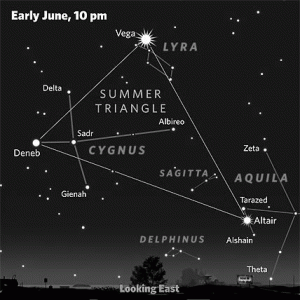
There are lost and forgotten coastal regions on Earth but no evidence that they were more advanced relative to their time period than anyone else, i think the legends of an advanced otherworld gave rise to speculation that this could be some place on Earth, Francis Bacon in New Atlantis considers there could be a lost island inhabited by Jews more advanced than everyone else and Jacob Frank repeats the same myth, but i think that was shameless and ridiculous self promotion and not a particularly inspiring basis for myth/legend/fantasy.

edit on 17-5-2021 by Madrusa because: (no reason given)
a reply to: Madrusa

apod.nasa.gov...
Eagle and the Swan are birds of a feather.
The fake Jew Atlantis myth sounds terrible, obviously leads to no good.
No I'll follow the legends of an advanced otherworld, the stories just brim with light to me...
Particularly inspiring for myth/legend/fantasy.

The Eagle Nebula and the Swan Nebula span this broad starscape, a telescopic view toward the Sagittarius spiral arm and the center of our Milky Way galaxy. The Eagle, also known as M16, is at top and M17, the Swan, at bottom of the frame showing the cosmic clouds as brighter regions of active star-formation.
apod.nasa.gov...
Eagle and the Swan are birds of a feather.
The fake Jew Atlantis myth sounds terrible, obviously leads to no good.
No I'll follow the legends of an advanced otherworld, the stories just brim with light to me...
Although a planet has yet to be directly observed around Vega, the presence of a planetary system cannot yet be ruled out. Thus there could be smaller, terrestrial planets orbiting closer to the star. The inclination of planetary orbits around Vega is likely to be closely aligned to the equatorial plane of this star.
so the Princess may be seen to arrive upon a Swan, as was the case with the Nanse daughter of En-ki
Particularly inspiring for myth/legend/fantasy.
Out of darkness I understand the night:
Dreams flow, a star shines.
Ah! I desire Evenstar.
Having watched the day grow dark
I go into night - a place to dream.
Ah! I desire Elfstone.
Behold! The star of stars!
The song of the star enchants my heart.
Ah! I desire Evenstar.
The flame of the fire of the heart
shines, rises, endures.
Ah! I desire Elfstone.
edit on 18-5-2021 by primalfractal because: (no reason given)
a reply to: primalfractal
Yes the Space Nazi fantasy is much better, the Swan/Cygnus introduces the elements of the migratory and purity such as the legend of the Swan Prince and the guardians of the Holy Grail, which formerly was the serving cup of the mysteries ultimately relating to Bau/Vega as a herbalist and bar-maid, Altair is the Uber that you take to the bar.

The Eye of Horus as illustrated should naturally belong to the Hawk and not the Sethian.
Yes the Space Nazi fantasy is much better, the Swan/Cygnus introduces the elements of the migratory and purity such as the legend of the Swan Prince and the guardians of the Holy Grail, which formerly was the serving cup of the mysteries ultimately relating to Bau/Vega as a herbalist and bar-maid, Altair is the Uber that you take to the bar.

The Eye of Horus as illustrated should naturally belong to the Hawk and not the Sethian.
edit on 18-5-2021 by Madrusa because: (no reason
given)
a reply to: Madrusa
Absolutely magnificent , that Space Nazi.
www.worldhistory.org...
etcsl.orinst.ox.ac.uk...
The grail legends have always been favourites of mine, I grew up on them. Sad end, Arthur's... but they say he will return when Britain most needs him...
Three knights found the grail, Sir Bors, Percival, and Galahad.
Galahads name -
But Percival, or more specifically his son, is the one associated with swans.
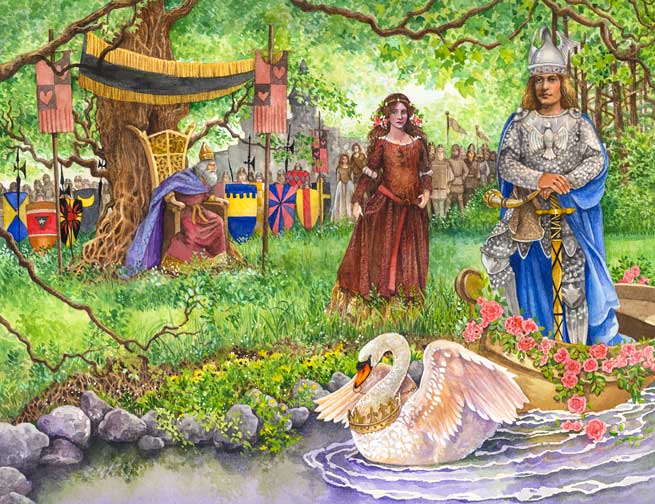
Absolutely magnificent , that Space Nazi.
Nanshe (also known as Nanse, Nazi) is the Sumerian goddess of social justice and divination, whose popularity eventually transcended her original boundaries of southern Mesopotamia toward all points throughout the region in the 3rd millennium BCE.
www.worldhistory.org...
The guarantor of boundaries, the expert in righteous words, lady, wise woman who founded Lagac ...... with Jatumdug. ...... righteous words for ... Nance. The exalted lady whose commands are ......, the lady who like Enlil determines fates, who is seated on the throne of Sirara -- she, the pure one, looks at her powers
etcsl.orinst.ox.ac.uk...
The grail legends have always been favourites of mine, I grew up on them. Sad end, Arthur's... but they say he will return when Britain most needs him...
Three knights found the grail, Sir Bors, Percival, and Galahad.
Galahad is the knight who is chosen to find the Holy Grail. Galahad, in both the Lancelot-Grail cycle and in Malory's retelling, is exalted above all the other knights: he is the one worthy enough to have the Holy Grail revealed to him and to be taken into Heaven.
Galahads name -
may come from Welsh Gwalchafed (hawk of summer) or "gwalch" + "cad" (hawk of battle)
But Percival, or more specifically his son, is the one associated with swans.
Lohengrin (German: [ˈloːənɡʁiːn]) is a character in German Arthurian literature. The son of Parzival (Percival), he is a knight of the Holy Grail sent in a boat pulled by swans to rescue a maiden who can never ask his identity. His story, which first appears in Wolfram von Eschenbach's Parzival, is a version of the Knight of the Swan legend known from a variety of medieval sources. Richard Wagner's opera Lohengrin of 1848 is based upon the legend

edit on 19-5-2021 by primalfractal because: (no reason given)
a reply to: Madrusa
Find the Dolopathos version interesting, part of a seven sages narrative with roots in India, then Persia.
Seven swan children.
And also Vega and Altair had the 7 thing going too, with the magpie bridge yearly rendezvous.
And the Seven Gates...
Brings to mind the Sumerian 7 sages, and some sort of strange coalsack in the South.
Find the Dolopathos version interesting, part of a seven sages narrative with roots in India, then Persia.
Seven swan children.
And also Vega and Altair had the 7 thing going too, with the magpie bridge yearly rendezvous.
And the Seven Gates...
Included in Johannes de Alta Silva's Dolopathos sive de Rege et Septem Sapientibus (ca. 1190), a Latin version of the Seven Sages of Rome is a story of the swan children which has served as a precursor to the poems of the Crusade cycle. The tale was adapted into the French Li romans de Dolopathos by the poet Herbert.
A nameless young lord becomes lost in the hunt for a white stag and wanders into an enchanted forest where he encounters a mysterious woman (clearly a swan maiden or fairy) in the act of bathing, while clutching a gold necklace. They fall instantly for each other and consummate their love.
The young lord brings her to his castle, and the maiden (just as she has foretold) gives birth to a septuplet, six boys and a girl, with golden chains about their necks. But her evil mother-in-law swaps the newborn with seven puppies. The servant with orders to kill the children in the forest just abandons them under a tree.
The young lord is told by his wicked mother that his bride gave birth to a litter of pups, and he punishes her by burying her up to the neck for seven years. Some time later, the young lord while hunting encounters the children in the forest, and the wicked mother's lie starts to unravel. The servant is sent out to search them, and find the boys bathing in the form of swans, with their sister guarding their gold chains
The Seven Wise Masters (also called the Seven Sages or Seven Wise Men) is a cycle of stories of Sanskrit, Persian or Hebrew origins.
The cycle of stories, which appears in many European languages, is of Eastern origin. An analogous collection occurs in Sanskrit, attributed to the Indian philosopher Syntipas in the first century BC,[citation needed] though the Indian original is unknown. Other suggested origins are Persian (since the earliest surviving texts are in Persian)
Brings to mind the Sumerian 7 sages, and some sort of strange coalsack in the South.
edit on 19-5-2021 by primalfractal because: (no reason given)
a reply to: primalfractal
The Classical and Medieval versions of this generally involve 15 tales, seven false given by an evil Empress and seven of pure reason by the Sages countering these and a deciding one given by the Prince, it all thus relates to continuation of the seven Divine powers tradition, in Christianity seven deadly sins and seven gifts of the Holy Spirit, some of the elements are interesting in terms of puppies and piglets offered to the dark Goddess as substitute or subterfuge.
a reply to: primalfractal
The bird of Goddess Nazi is generally given/guessed to be the Pelican, but the texts just indicate a large white bird.
he placed the holy pelican (?), the standard of Nanše
u5 kug šu-nir dnanše-kam
The sign used is u5
Not surprisingly given the associations this could be related to Enki
The cult of Enki and by extension nanše then was concerned with living creatures from the depths to the heights
The Classical and Medieval versions of this generally involve 15 tales, seven false given by an evil Empress and seven of pure reason by the Sages countering these and a deciding one given by the Prince, it all thus relates to continuation of the seven Divine powers tradition, in Christianity seven deadly sins and seven gifts of the Holy Spirit, some of the elements are interesting in terms of puppies and piglets offered to the dark Goddess as substitute or subterfuge.
a reply to: primalfractal
The bird of Goddess Nazi is generally given/guessed to be the Pelican, but the texts just indicate a large white bird.
The pelican (?) came forth from the holy reed-beds. It came forth from the holy reed-beds. The wise pelican (?) spent the day high in the skies. The pelican (?) cried out in the sky: its singing was sweet and its voice was pleasing. My lady ...... her pelican (?) with beauty. The mistress mother Nance ...... her pelican (?) with beauty.
She herself ...... upon the water like a large pelican (?). Stepping onto earth from heaven, she ...... in the water like a holy cow. A holy pelican (?), a white cow, she drank by the water's side. With the towering flood ....... Nance, shining ...... of the Anuna, the great gods!
he placed the holy pelican (?), the standard of Nanše
u5 kug šu-nir dnanše-kam
The sign used is u5
U5: n., male bird, cock; totality; earth pile or levee; raised area v., to mount (in intercourse); to be on top of; to ride; to board (a boat); to steer, conduct. adj., (raised) high, especially land or ground
Not surprisingly given the associations this could be related to Enki
The lord established a shrine, a holy shrine, whose interior is elaborately constructed. He established a shrine in the sea, a holy shrine, whose interior is elaborately constructed. The shrine, whose interior is a tangled thread, is beyond understanding. The shrine's emplacement is situated by the constellation the Field, the holy upper shrine's emplacement faces towards the Chariot constellation. The Anuna stand by with prayers and supplications. They set up a great altar for Enki in the E-engura, for the lord ……. The great prince ……. …… the pelican of the sea..
The cult of Enki and by extension nanše then was concerned with living creatures from the depths to the heights
new topics
-
Israel attacking Iran again.
Middle East Issues: 32 minutes ago -
Michigan school district cancels lesson on gender identity and pronouns after backlash
Education and Media: 36 minutes ago -
When an Angel gets his or her wings
Religion, Faith, And Theology: 1 hours ago -
Comparing the theology of Paul and Hebrews
Religion, Faith, And Theology: 2 hours ago -
Pentagon acknowledges secret UFO project, the Kona Blue program | Vargas Reports
Aliens and UFOs: 3 hours ago -
Boston Dynamics say Farewell to Atlas
Science & Technology: 3 hours ago -
I hate dreaming
Rant: 4 hours ago -
Man sets himself on fire outside Donald Trump trial
Mainstream News: 6 hours ago -
Biden says little kids flip him the bird all the time.
Politicians & People: 6 hours ago -
The Democrats Take Control the House - Look what happened while you were sleeping
US Political Madness: 6 hours ago
top topics
-
The Democrats Take Control the House - Look what happened while you were sleeping
US Political Madness: 6 hours ago, 17 flags -
In an Historic First, In N Out Burger Permanently Closes a Location
Mainstream News: 8 hours ago, 14 flags -
Biden says little kids flip him the bird all the time.
Politicians & People: 6 hours ago, 8 flags -
A man of the people
Medical Issues & Conspiracies: 14 hours ago, 8 flags -
Man sets himself on fire outside Donald Trump trial
Mainstream News: 6 hours ago, 7 flags -
Pentagon acknowledges secret UFO project, the Kona Blue program | Vargas Reports
Aliens and UFOs: 3 hours ago, 5 flags -
4 plans of US elites to defeat Russia
New World Order: 15 hours ago, 4 flags -
Sheetz facing racial discrimination lawsuit for considering criminal history in hiring
Social Issues and Civil Unrest: 6 hours ago, 3 flags -
Boston Dynamics say Farewell to Atlas
Science & Technology: 3 hours ago, 3 flags -
Are you ready for the return of Jesus Christ? Have you been cleansed by His blood?
Religion, Faith, And Theology: 11 hours ago, 3 flags
active topics
-
Candidate TRUMP Now Has Crazy Judge JUAN MERCHAN After Him - The Stormy Daniels Hush-Money Case.
Political Conspiracies • 403 • : Threadbarer -
Israel attacking Iran again.
Middle East Issues • 11 • : theatreboy -
Cat Movies
Movies • 19 • : 5thHead -
Man sets himself on fire outside Donald Trump trial
Mainstream News • 33 • : ByeByeAmericanPie -
Pentagon acknowledges secret UFO project, the Kona Blue program | Vargas Reports
Aliens and UFOs • 6 • : Ophiuchus1 -
Israeli Missile Strikes in Iran, Explosions in Syria + Iraq
World War Three • 104 • : CCoburn -
The Acronym Game .. Pt.3
General Chit Chat • 7732 • : RAY1990 -
Michigan school district cancels lesson on gender identity and pronouns after backlash
Education and Media • 3 • : Consvoli -
Are you ready for the return of Jesus Christ? Have you been cleansed by His blood?
Religion, Faith, And Theology • 20 • : RAY1990 -
The Democrats Take Control the House - Look what happened while you were sleeping
US Political Madness • 63 • : NoCorruptionAllowed

